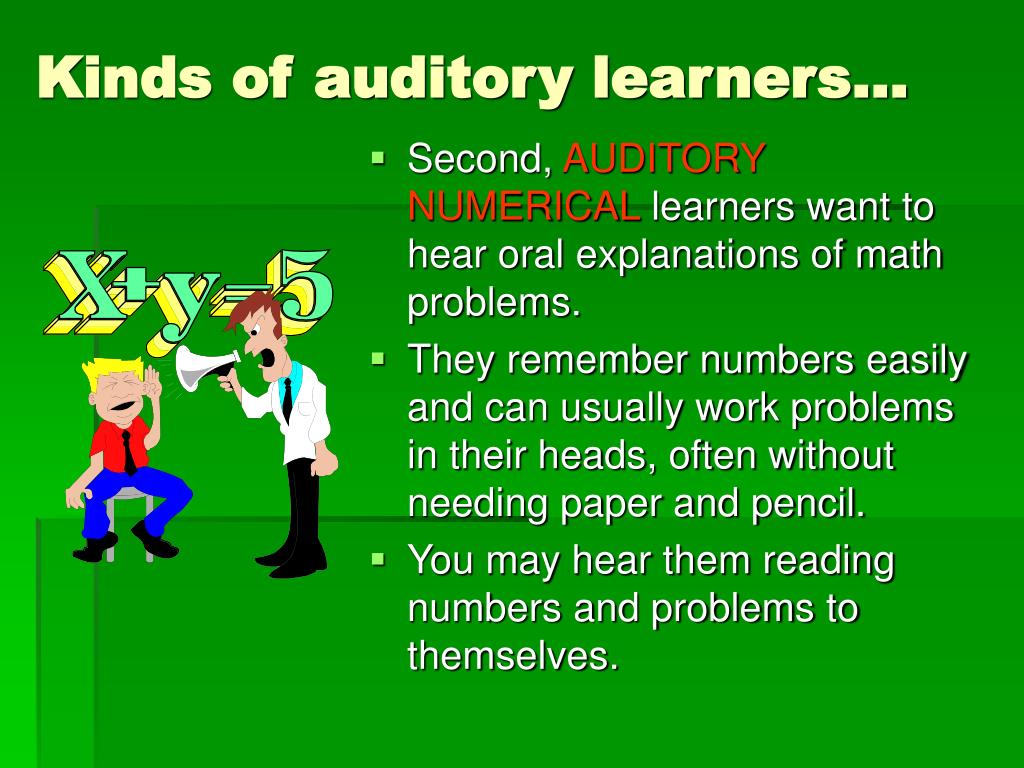

That is one of the numerous reasons why visual learning is so effective. It’s the most complicated machine we’ve ever seen, and yet it’s capable of producing something as simple as a grin. Visual learners can learn while they observe. Auditory learners learn more quickly than visual learners. When they see something, it helps them remember it better.Ħ. Visual learners can pick up information fast. When they hear something, it helps them remember it better. Visual learners are more likely to be adept at problem-solving, decision-making, and creative thinking.ĥ. Auditory learners are more likely to excel at reading, writing, and public speaking. Visual learners are less analytical and rational than auditory learners.

Science and mathematics are more appealing to auditory learners.Ĥ. They are more prone to appreciate art and music. Visual learners are more artistic, innovative, and creative than auditory learners. Listening to stories, lectures, and speeches is the best way for auditory learners to learn.ģ.

Visual learners, as opposed to auditory learners, learn best by watching and looking at visuals. Visual learners learn best by seeing visuals or images, whereas auditory learners learn best by hearing and reading words.Ģ. Auditory learners can learn through listening, whereas visual learners can learn through observing. The second phase involves memory consolidation, which stabilizes and makes available the encoded representations for subsequent use.ĭifference between Visual Learning and Auditory Learningġ. The initial representation of an auditory event as a pattern of brain activity occurs in the first phase. It is split into two stages: encoding and consolidation. Auditory learning is the most complicated of human learning processes. Hearing, speech perception and production, language acquisition and development, and sound localization are all examples of auditory learning. Passive listening was considered to be a sort of “hearing,” whereas active listening was considered to be a form of “speaking”.Īuditory learning is the process of learning to interpret and respond to essential communication sounds. Prior to this point, learning was thought to be a type of passive receiving (as opposed to active or productive reception). Visual learning can be used in any subject, but it is most commonly utilized in mathematics, science, and English.Ī brief history of the phrase “auditory learning” Auditory learning is a relatively new phrase that was initially used to describe learning by listening in the 1940s and 1950s. Learning visually is easy on the mind, therefore it benefits people who have trouble remembering things or paying attention. It is ideal for children and people who have difficulty reading, writing, or comprehending. People with dyslexia and vision problems may be able to use visual learning since it requires a distinct set of abilities from those with which they struggle. It is a very effective method of learning. It also enables people to learn more efficiently because they can see what they are learning rather than relying on memory. Visual learning is predicated on the idea that the human brain understands visuals faster and more easily than words. It differs from traditional learning in that it emphasizes pictures over words and text as the major learning instrument. In recent years, visual learning has grown in popularity as a method of learning.
MEANING OF AUDITORY LEARNING STYLE HOW TO
In this post, we’ll look at the benefits and drawbacks of each learning style, as well as how to use them effectively in your own learning. While some research implies that visual learners benefit more from pictures and other visuals, others believe that auditory learners benefit more from the spoken word. For decades, people have debated whether learning style is best for whatever piece of information.


 0 kommentar(er)
0 kommentar(er)
